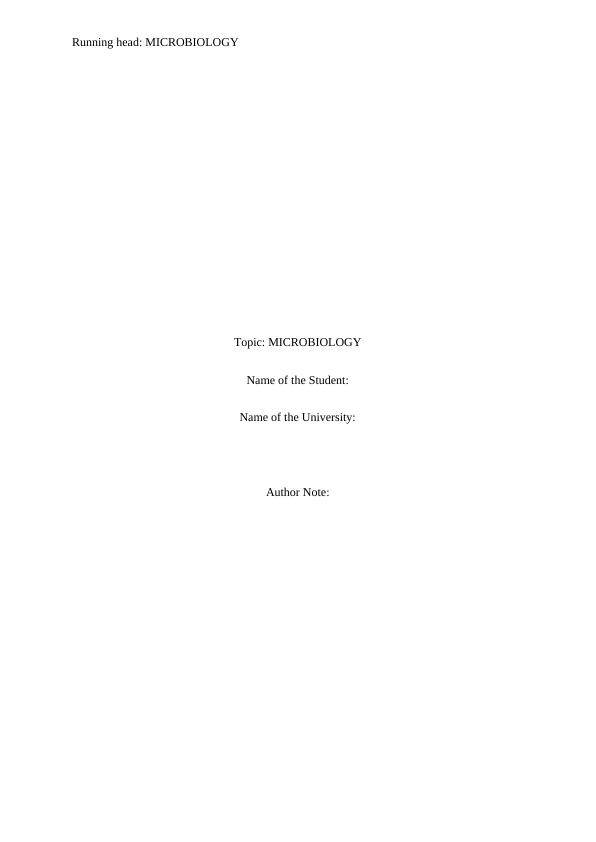Microbiology Study: Identification of Unknown Organisms from Bacterial Cultures
This is a handbook for the Microbiology Practicals / Workshops module at UCLAN. It covers topics such as laboratory safety, practicals with and without microorganisms, bacterial inoculation and growth, and observation of bacterial cultures under the microscope.
8 Pages1804 Words438 Views
Added on 2023-04-20
About This Document
This study focuses on the identification of unknown organisms from bacterial cultures in the field of microbiology. It includes experiments on growth, staining, and API tests for the identification of Streptococci strains.
Microbiology Study: Identification of Unknown Organisms from Bacterial Cultures
This is a handbook for the Microbiology Practicals / Workshops module at UCLAN. It covers topics such as laboratory safety, practicals with and without microorganisms, bacterial inoculation and growth, and observation of bacterial cultures under the microscope.
Added on 2023-04-20
ShareRelated Documents
End of preview
Want to access all the pages? Upload your documents or become a member.
Isolation and Characterization of Unknown Bacteria B Using Morphological and Biochemical Tests
|6
|2023
|228
Microbiology Assignment | Morphology of Bacteria
|13
|3192
|249
Effects of Antibiotics on Bacterial Growth
|7
|1419
|449
Medical microbiology Assignment PDF
|6
|1494
|46
Identification of Unknown Bacterial Samples through Gram Staining
|13
|2688
|454
Microbiology and Techniques | Study
|13
|3059
|15



